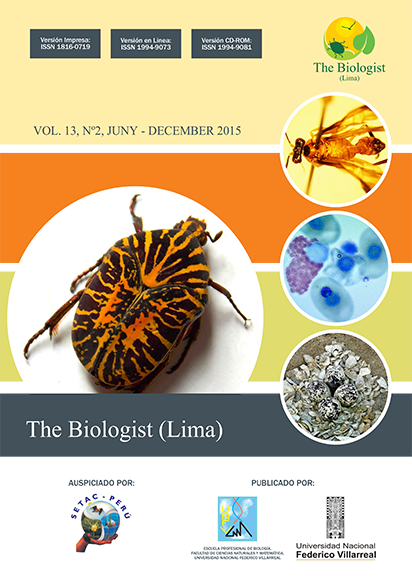STATISTICAL MODEL FOR ESTIMATING THE POPULATION THAT RECEIVES HUMANITARIAN AID FOR DISASTER IN PERU
DOI:
https://doi.org/10.24039/rtb20151321556Keywords:
Humanitarian assistance, injured population disaster, models of multiple linear regression, statistical model, PeruAbstract
This research aims to design a statistical model to estimate the population receiving humanitarian aid to people affected by disasters in Peru, for which has been used ten variables: emergencies occurring in Peru (X1) injured population (X2) affected population (X3) homes destroyed (X4) homes affected (X5) hectares of crop losses (X6) hectares of crops affected (X7) the probabilities of occurrence of emergencies and disasters (X8) emergencies such phenomena occurred in Peru (X9) emergencies and natural regions (X10) The data are 52,327 records from 2003 to 2014 from the National Information System for Response and Rehabilitation (SINPAD), and the National Civil Defense Institute of Peru (INDECI) features on Web Platform, whose record of emergencies and
disasters is the responsibility of regional governments throughout Peru through the Emergency Operations Centers (COES). The data used in the design of the models were classified by quarters. To design the model the main hypotheses worked with eight variables, however only three variables best explained the model with the correlation coefficients (R), determination (R2), Durbin and Watson (D), F test validating the model and the t Student test, checking the validity, consistency and reliability of the parameters within the acceptable range. The multiple linear regression models to estimate the population receiving humanitarian disaster (y) was: y = 72455.731+ 0.417X2 + 0.405X3 - 3292452.345X8. Regression models were also designed by type of phenomenon and selected variables were prioritized by Pareto rule, where 80% of the damage was caused by the 20% of phenomena, so by having a record of twenty phenomena, leaving for the design of three models the following phenomena: frost, floods and rain, and fire, taking significant models. For frost the regression model was y = 5025.805 + 0.614X3 + 0.811X2 - 198.3119X8. To design the model of Floods and rains was: y = - 0.145 + 0.109X2 + 0.966X3 - 0.114
X4 + 0.449X 8. Finally the design model for fires in Peru was: y = - 49.914 + 0.520X2 + 0.966 X3 + 24.573,03X8. There also was designed three models of multiple linear regressions for the natural regions coast, highlands and jungle. For the coast the model was: y = 28469.5 + 0.358 X2 + 0.768X3 -1.736.203.8 X8 the highlands model was: y = 13.803,888 + 0.891 X2 + 0.253 X3, and the forest model: y = 909.070 + 0.420X2 + 0.430X3 . This statistical tool helps care for the disaster- affected population in Peru.
Downloads
Downloads
Published
How to Cite
Issue
Section
License

This work is licensed under a Creative Commons Attribution-NonCommercial-NoDerivatives 4.0 International License.
Objeto: El AUTOR-CEDENTE transfiere de manera TOTAL Y SIN LIMITACIÓN alguna al CESIONARIO (Revista The Biologist (Lima)) los derechos patrimoniales que le corresponden sobre sus obras por el tiempo que establezca la ley internacional. En virtud de lo anterior, se entiende que el CESIONARIO adquiere el derecho de reproducción en todas sus modalidades, incluso para inclusión audiovisual; el derecho de transformación o adaptación, comunicación pública, traducción, distribución y, en general, cualquier tipo de explotación que de las obras se pueda realizar por cualquier medio conocido o por conocer en el territorio nacional o internacional.
Remuneración: La cesión de los derechos patrimoniales de autor que mediante este contrato se hace será a título gratuito.
Condiciones y legitimidad de los derechos: El AUTOR-CEDENTE garantiza que es propietario integral de los derechos de explotación de la(s) obra(s) y en consecuencia garantiza que puede contratar y transferir los derechos aquí cedidos sin ningún tipo de limitación por no tener ningún tipo de gravamen, limitación o disposición. En todo caso, responderá por cualquier reclamo que en materia de derecho de autor se pueda presentar, exonerando de cualquier responsabilidad al CESIONARIO.
Licencia de acceso abierto: El AUTOR-CEDENTE autoriza que manuscrito publicado en la Revista Científica The Biologist (Lima) (versión Impresa ISSN 1816-0719, versión en línea ISSN 1994-9073) permanece disponible para su consulta pública en el sitio web http://revistas.unfv.edu.pe/index.php/rtb/index y en los diferentes sistemas de indexación y bases de datos en las que la revista tiene visibilidad, bajo la licencia Creative Commons, en la modalidad Reconocimiento-No comercial- Sin Trabajos derivados –aprobada en Perú, y por lo tanto son de acceso abierto. De ahí que los autores dan, sin derecho a retribución económica, a la Escuela Profesional de Biología, Facultad de Ciencias Naturales y Matemática de la Universidad Nacional Federico Villarreal (EPB - FCCNM - UNFV), los derechos de autor para la edición y reproducción a través de diferentes medios de difusión.









































